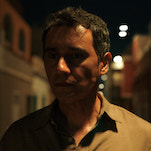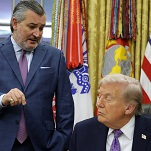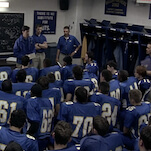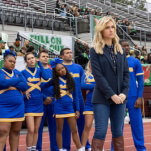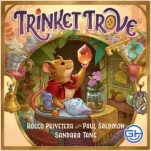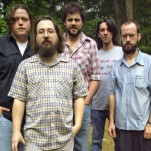Watching the disciples of Indian guru Bhagwan Shree Rajneesh try to explain away the group’s involvement in everything from immigration fraud to attempted murder to intentionally contaminating salad bars with salmonella as a test run for a potential mass poisoning, you can’t help but wonder how these self-absorbed baby boomers’ quest for enlightenment got so tainted with myopia and greed.
Bhagwan himself, who’s referred to as “Osho” by his most devoted followers and who died in 1990, is the great void at the center of Wild Wild Country. Aside from his videotaped lectures, in which he softly murmurs about sexual freedom with unnervingly still eyes, all Wild Wild Country has to say about Bhagwan comes from extensive video interviews with Rajneeshee past and present, including Bhagwan’s longtime personal secretary Ma Anand Sheela. Whenever Bhagwan would decide to stop speaking for a time—periods that would sometimes last for years—Sheela would become the group’s de facto leader, absolute in her devotion to the man she saw, in many ways, as the love of her life. Until corruption and jealousy turned them against each other, that is.
Sheela was also downright Machiavellian in her methods, showing a steely resolve and amoral pragmatism as she bought up property in and around Antelope until the Rajneeshee, with their distinctive red outfits and unsettling, dazed smiles, outnumbered the original residents. From there, all it took was one election to rename the town Rajneeshpuram, replace the corner diner with a health-food restaurant, and rename the streets after Eastern mystics. That’s when the group caught the attention of international media, as well as the U.S. Attorney’s office. Things began to escalate from there, until state officials mobilized the National Guard in anticipation of a showdown with Sheela and her heavily armed Rajneeshee. (Collecting an arsenal of semiautomatic weapons was somehow not incompatible with their nonviolent beliefs.) That apocalyptic confrontation—spoiler alert, as much as such a thing is possible for a historical event—never came to pass.
Directors Chapman and Maclain Way say they deliberately tried to avoid the more sensational aspects of the Rajneeshees’ story in Wild Wild Country, instead focusing on how the case challenged the Constitutional separation of church and state. At the end of the series, though, the legal and cultural questions raised by the story remain largely unanswered. Instead, Wild Wild Country ends up being a character study, an attempt to suss out whether Bhagwan and Sheela really bought what they were selling to white spiritual seekers, making millions in the process. Sheela in particular is a fascinating character, a woman who several interviewees describe as “evil” but whose own self-assessment is far more nuanced. But it’s Swami Prem Niren, Bhagwan’s attorney who remains a true believer after several decades and multiple indictments, who may be the most enigmatic of them all.
The series devotes significantly more screen time to the members of the cult than to the shellshocked residents who viewed the Rajneeshee’s arrival as a religious ambush, giving us little background on the everyday life of the town before, during, and after what they rather hyperbolically call the “invasion and occupation” of Antelope, Oregon. (Nike co-founder Bill Bowerman was a leader in the movement to expel the Rajneeshee from Oregon, an interesting little detail that’s underplayed in the documentary.) That, and a seriously stretched-out final hour, suggest that a bit more time spent on the true-crime aspects of the tale would actually have been preferable, simply to balance out the long sections where followers wax rhapsodic about losing their Shangri-la to small-minded bigots over poignant piano.
The Ways do add the occasional ironic touch, like a particularly pointed sip of water after an attorney refers to “varying degrees of certainty” over a local politician’s claims. Mostly, though, they let each subject present their interpretation of events without much commentary, an approach that has its pluses—the third and fourth episodes of Wild Wild Country can be downright thrilling as facts are presented, and then contradicted, with dizzying speed—and its minuses. The massive volume of archival footage about the Rajneeshpuram experiment, both from news outlets and the group’s own records, is a gift to the filmmakers in many ways, but it also tends to further contribute to the lopsided feel. Footage of the locals outside of their talking-head interviews consists of wide-angle shots of hunched-over figures in overalls and flannel striding across vast, vacant spaces, a clichéd vision of the quiet dignity of a dying way of life. And did we mention the title font, pulled straight from a Pinterest board for a rustic barn wedding?
These stylistic quibbles are minor, though, given the sheer scope of the series, which clocks in at just over six hours all told. That being said, the filmmakers’ tendency to skim over the more unseemly aspects of a story with many unseemly aspects to it may leave viewers wanting to know more about the wilder aspects of the case. (There’s as much information about the salmonella plot mentioned up top on Wikipedia as there is in this otherwise exhaustive series, for example.) Perhaps that’s the price the Ways had to pay for access to Sheela and members of her inner circle. And, to step into her cynical, opportunistic mindset for a minute, is being left wanting more such a bad thing?








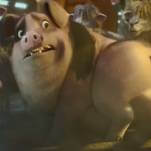
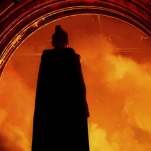

![HBO teases new Euphoria, Larry David, and much more in 2026 sizzle reel [Updated]](https://img.pastemagazine.com/wp-content/avuploads/2025/12/12100344/MixCollage-12-Dec-2025-09-56-AM-9137.jpg)


